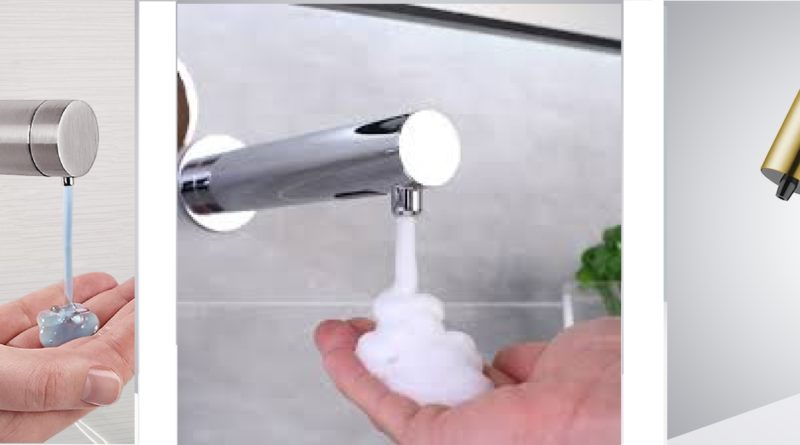Stainless Steel Automatic or sensor soap dispensers are technology contributing to health and hygiene in public restrooms, restaurants, spas and other high traffic restrooms. The Stainless Steel Automatic soap dispensers have presence sensors that upon detecting the presence of the hand, dispenses only as much soap as would be necessary in a regular hand wash.
Do you have one in your office? If not, the first thing you need to introduce to your office, if you wish to upgrade any bathrooms, is the stainless steel commercial automatic soap bath technology.
Automatic soap dispensers can be a good product to use in high-traffic restrooms for several reasons:
- Hygiene: Automatic soap dispensers eliminate the need for physical contact, reducing the spread of germs and promoting better hand hygiene. Users can simply place their hands under the sensor, and the soap is dispensed without touching the dispenser, minimizing the risk of cross-contamination.
- Efficiency: In high-traffic restrooms, manual soap dispensers can experience frequent usage, leading to messy and wasteful situations. Automatic soap dispensers, on the other hand, provide controlled soap portions with each use, ensuring efficient and consistent dispensing. This reduces soap waste and the need for frequent refills.
- Convenience: Automatic soap dispensers offer convenience and ease of use. The touchless operation allows users to access soap quickly without having to handle a dispenser lever or pump. This can be particularly beneficial in busy restrooms where speed and convenience are important factors.
- Maintenance: Automatic soap dispensers are designed for easy maintenance. Many models have transparent reservoirs or indicator lights that signal when soap levels are low, enabling staff to refill them promptly. The sealed reservoirs also help prevent soap from spilling or drying out, reducing cleaning and maintenance efforts.
- Cost Savings: While automatic soap dispensers may have a higher upfront cost compared to manual dispensers, they can result in long-term cost savings. By providing controlled soap portions, they minimize waste and ensure optimal soap usage. Additionally, the touchless operation can prevent vandalism or intentional misuse, saving on soap expenses.
- User Experience: Automatic soap dispensers enhance the overall user experience in high-traffic restrooms. The touchless operation and consistent soap dispensing create a streamlined and convenient handwashing process. This can contribute to positive customer experiences and satisfaction.
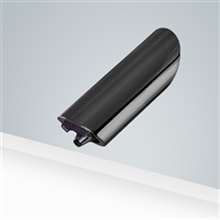 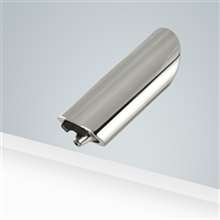 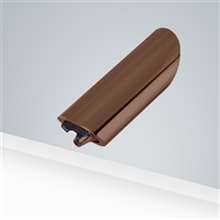
Types of commercial automatic soap dispensers
There are a number of types of soap dispensers that differ in their working. There are three different kinds of sensors that these dispensers can have. Namely:
- Radar-based sensor
Radar-based sensors are based on micro-wave emissions. These dispensers emit microwaves constantly and when they are reflected back irregularly, soap is dispensed. Some modern forms of dispensers use infrared rays with emitters and controllers. Emitters in the dispenser send out infrared pulses which are reflected back in the presence of hands. The sensor is placed to the face in the same direction as the emitter and when rays are reflected back to the collector the pump is switched on.
- Photo sensor
The photo sensor has a light source and a sensor. The source emits a focused ray of light which is disrupted with the presence of hands and this disruption when detected by the sensor, activates the pump to dispense the soap.
- Passive infrared sensor
This type of sensor detects the infrared rays that the human body emits. When infrared rays are detected in front of the nozzle of the dispenser, soap is dispensed. |
|
 |
| One such automatic soap dispenser is this product:
1. Fontana Commercial Electronic Sensor Automatic Touchless Soap Dispenser
Features of stainless steel automatic soap dispenser
The soap dispenser consists of the nozzle and the soap container present; features present in all soap dispensers. In addition to this, the automatic dispensers have sensors; one of the three types mentioned above, and a pump that is activated by this sensor. These features make this type of soap dispenser different form the others.
2. Fontana Verona Automatic Sensor Wall Mount Liquid Soap Dispenser
3. Fontana Texas Automatic Free Stand Soap Dispenser
Benefits of commercial automatic soap dispensers
In a normal soap dispenser or in the use of a bar of soap, the hygienic role of the hand-washing is destroyed by the contact with the soap or the button. Contamination and transmission of germs is likely in domestic as well as public bathrooms with any other technology for soaps. The automatic soap dispensers eliminate bacterial transmission by eliminating the need to touch in order to get soap.
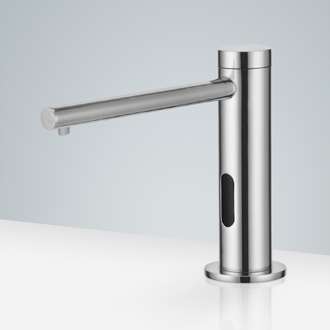 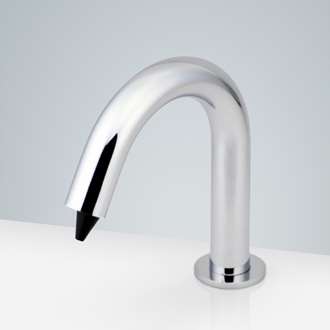 ![Commercial Deck Mount Automatic Intelligent Touchless Soap Dispenser Commercial Deck Mount Automatic Intelligent Touchless Soap Dispenser]() 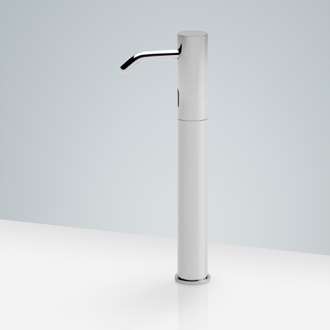 |
|
 |
- Release of preset increments of soaps avoids wastage
In a conventional soap dispenser a great amount of liquid soap can be wasted if the users do not carefully monitor the amount of soap they use. This is particularly problematic in public bathrooms. Automatic soap dispensers offer the ideal solution. They dispense only as much soap as needed for one regular hand-wash, and thereby reduce risk of wastage.
- Versatility of commercial applications use
Once you have the soap dispenser bottle, it can be used for a number of other liquids as well. Instead of restricting its use to liquid soap, you can for example use it for lotions, hand sanitizers, laundry detergents etc.
- Automatic soap dispensers are very easy to install and use
Instructions given are quite easy and this also makes use of these dispensers by children much more effective.
Where can automatic soap dispensers be installed?
Besides its common use in the office buliding restrooms , an increasing number of public places are employing the use of these dispensers. Public washrooms in restaurants, hotels, gyms etc. are making use of this hygienic technology. It can also be used effectively in hospital settings where health and hygiene are particularly important.
Durability and ease of use for those stainless steel commercial auto soap dispensers
With no need to touch the dispenser to get soap, these dispensers are much easier to use than any other technology. This lack of contact with the dispenser also makes damage less likely and thereby proves more durable than others. This will ultimately reduce repair expenses and make maintenance in public washrooms less costly or time-consuming. |
|



